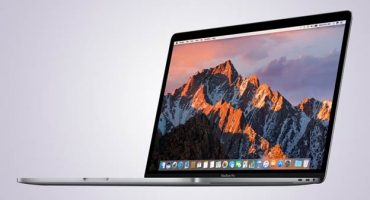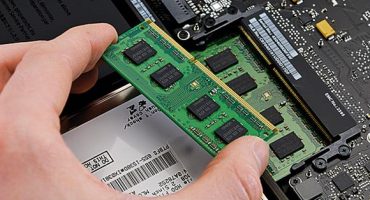A laptop is an indispensable tool for homework and communication on the Internet. A properly selected laptop computer should not be heavy. After all, it is usually purchased as a portable device. The main parameters of the gadget should fully meet the needs of the owner. The main rule that you must observe when choosing is to pay for the laptop exactly as much money as it is necessary when doing work and on vacation.

A laptop - an indispensable home assistant
Recommended Home Laptop Settings
Choosing the right laptop for your home is not an easy task. First of all, it is necessary in order to:
- search for the necessary materials on the network;
- type and correct texts;
- Watch a video
- listen to music.
Screen diagonal
Modern standards for laptop display sizes, (inches / centimeters):
- 13,3/33,8;
- 14,0/35,6;
- 15,6/39,6;
- 17,3/43,9.
The more often you plan to carry the gadget with you, the less you should choose the screen size. Sizes from 15.6 inches are ideal for home use.
Matrix type
This parameter determines what the quality of the image on the screen will be. A correctly selected matrix will help to avoid flare and a small viewing angle. Stop your choice on the screen, whose resolution is less than HD (1366 × 768 pixels), should not be. It is best to choose a device with a Full HD matrix (1920x1080) and higher:
- TN is a standard-quality screen with low viewing angles. The only "plus" of such monitors is a quick response.
- SVA - monitors similar in quality to TN. Used in low-cost models of Hewlett Packard laptops.
- IPS, MVA and PLS are high-quality matrices with excellent viewing angles, but lower response speed than TN.

Comparison of different types of laptop screen matrices
Screen type
Modern laptops are equipped with two types of screens - glossy and matte. To work with professional photo and video editors, you need to purchase a gadget with a glossy screen. On it, the image is much less distorted. The matte screen has fewer glare with standard brightness settings.
Display resolution
A parameter on the correct choice of which the clarity of the picture directly depends. The higher the resolution, the greater the load on the processor, graphics chip and operating system. If the user stops the choice on a device with a diagonal of up to 15 inches, the most suitable screen resolution would be 1366x768 (HD). 15-17-inch devices should be purchased with screens of 1600 × 900 (HD +) or 1920 × 1080 (Full HD).
Other important parameters for choosing the right home device are the processor and video card power, type of RAM, the volume and characteristics of the drive, the quality of the case and peripherals.
Installed operating system
The user can choose a device in several configurations at his discretion:
- without installed operating system (free-DOS);
- with free Linux software;
- with the Windows operating system of various configurations.
Software increases the cost of a laptop. If this issue is fundamental, you can install it yourself. In this case, the seller is not responsible for the correct operation of the device.
Those who purchase a MacBook can independently replace Apple's proprietary shell on Windows 10.The perfect choice for your portable device is Windows7. But the manufacturer no longer updates this software, therefore, it does not bear responsibility for quality. To eliminate the likelihood of a device failure, you should abandon any updates of the seventh version.

For most owners of laptops, Windows 10 is an uncontested option.
Windows 10 is designed for use on tablets. It is sometimes difficult for laptop owners to choose the appropriate screen resolution, shortcut size, and other visual control options. But today it is the only version for which the developer releases licensed updates.
CPU Parameters
Manufacturers install two types of chips on modern portable devices laptops - Intel and AMD. Until the end of 2017, Intel's hardware was virtually uncontested for laptops. In 2018, AMD for the first time in many years brought to the market a decent line of Ryzen mobile processors. In terms of performance / power consumption, they are quite comparable to Core. More productive than in Intel processors, the Vega graphics chip allows you to smoothly run games and applications with 3D graphics. But if a discrete graphics card is pre-installed with the Core chip, the advantage of AMD graphics is almost imperceptible.
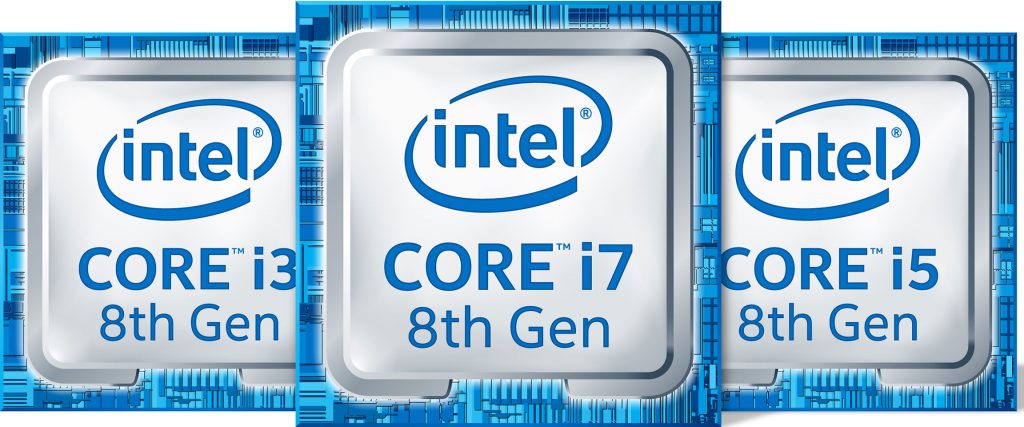
8th Generation Core i7 Chip
Over the past two or three years, manufacturers have virtually stopped installing low-power Atom and Celeron line processors even on budget laptop brands. Pentium is installed on cheap devices. Medium and expensive models are exclusively equipped with chips of the Core 4-8 generation line. You can find out by the first digit of a four-digit number, which marks the processor number. The second digit means the Core line for which it is made.
Which manufacturer is better
A bit more detailed should describe the degree of multitasking assigned to laptops. Core i3 is quite capable of Internet surfing, working with office programs and other applications not demanding on the system. Chips of the next stage can allow the user to work with 3D-graphics (including video processing). Only at the launch of "heavy" games does he cope with his duties only at medium settings. If the buyer opted for a device with an i7 or i9 processor, then he can perform tasks of any complexity. Six-core i9s are only available in the eighth generation.
If the choice fell on an alternative manufacturer, from the line of 2018 the following models are most suitable for multitasking on a portable device:
- Ryzen 3 2200U.
- Ryzen 3 2300U.
- Ryzen 5 2500U.
- Ryzen 7 2700U.
2300U is quite expensive, so the cheaper, but no less productive, younger Ryzen 5 model will be the best solution.
Price category, thousand roubles. | Intel | AMD |
| From 20 | Core i3 6006U or i3 7020U Pentium 4405U or 4415U | Ryzen 3 2200U |
| From 30 | Core i3 8130U or i3 8250U | Ryzen 5 2500U |
| From 50 | Core i7 8550U or i5 8300U | Ryzen 7 2700U |
| From 60 | Core i7 8750U | — |
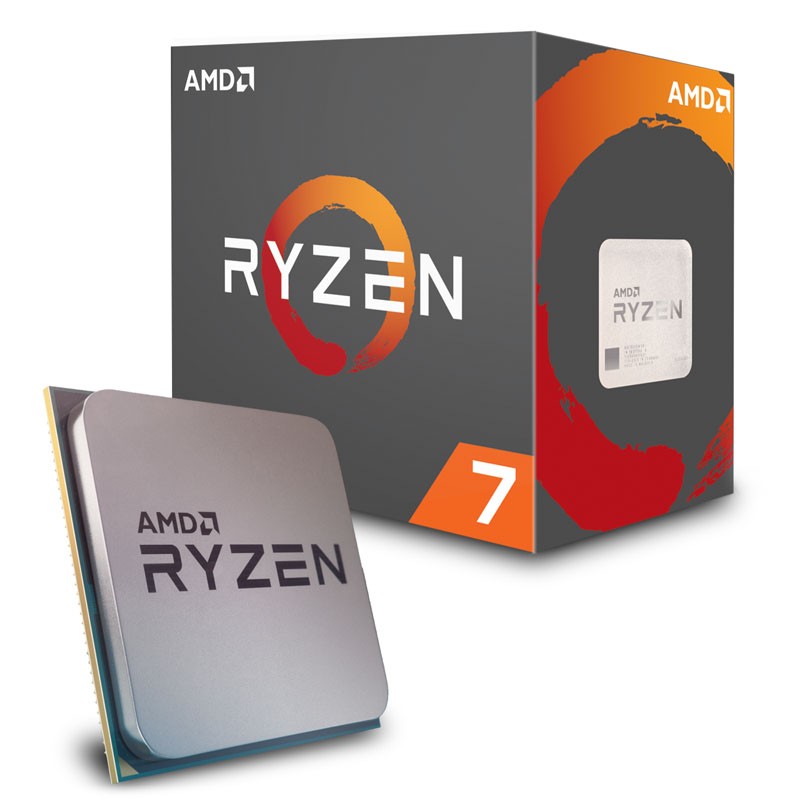
AMD released a worthy competitor to Core processors
The letter U in the chip marking indicates that they are energy efficient, consume only about 15 watts during standard operation. Only two of all Intel brand processors (Core i5 8300H and Core i7 8750H) have a rated power consumption of 45 watts. In this case, pay attention to the battery capacity.
How many cores should be
Outdated Atom chips should not be considered when buying. The most low-end devices for home use should be dual-core. To work freely with the basic set of programs or games, Core i5 with two cores is enough. It is this processor in terms of performance / price - the absolute leader in the market for budget desktops.

Core Quad-Core Architecture
To run programs for processing multimedia files, you should think about a device with a more powerful four-core chip. Modern 3D games will smoothly launch and work without any “brakes” at maximum settings if the chip is no less than four core.
What should be the frequency of the processor
The most important performance characteristic is the number of operations per second, or the clock speed of the microprocessor. It is measured in MHz. Budget laptops rarely have chips with a clock frequency greater than 2.5 GHz. This is more common for ultrabooks, which have maximum performance requirements. Three factors are crucial for choosing the right clock frequency:
- Number of Cores.
- Cache size
- The device supports Hyper-Threading and Turbo Boost technologies.

Notebook performance versus processor clock speed
Therefore, when choosing a portable PC, you should first determine the architecture of the chip. Further - with its clock frequency. If we are talking about models of processors of the same series, the rule "the higher the frequency, the better" is absolutely acceptable. For devices based on Intel, the minimum acceptable value is the clock frequency of 1.5 GHz when using the gadget for surfing the Internet, viewing multimedia files, working with various office programs.
Video card
Mobile processors most equipped with an integrated video core (graphics chip). But, since the processor power is noticeably less than that of stationary PCs, manufacturers complete portable devices with discrete graphics cards. This significantly increases energy consumption and cost. But this is absolutely necessary if the gadget will be used to work with graphics and games. Most mid-range notebooks based on Intel processors come with UHD Graphics 620 graphics chips.

Connecting a discrete graphics card to a laptop
The best discrete graphics cards for laptops are produced by two companies:
- NVidia - GeForce Series.
- AMD - Radeon series.
When choosing a video card, the main indicator is the amount of memory. For the correct execution of the tasks assigned to the product, it must be at least 4 GB. These criteria are suitable for modern cards of the 10th generation GeForce (1050, 1060 and 1070) and the 500th Radeon series (540, 550 and 560). The difference in speed between video cards of the previous and subsequent generations is 15-25%.
Buying a laptop to run “heavyweight” games in extreme modes primarily means choosing a modern, powerful graphics card. After that, it is necessary to choose a device with a processor corresponding to these parameters.
Video Memory Capacity
The next most important parameter is the amount of built-in cache. The processor speed is greater, the more capacious the cache. In this case, the amount of RAM is secondary, since the data exchange rate between the chip and cache is higher. When performing real tasks, two additional cores, or a high clock speed, cost less than a large cache size.
There is one “but.” A processor with a large amount of video memory costs more, it heats faster than more modest counterparts. Modern productive processors have a built-in three-level cache of 8 MB. Thus, most of the chips are made with video memory in the range of 2-3 MB.
Hard disk space
Five to seven years ago, the user was only asked about the size of the drive - the hard disk HDD. Modern devices can also be equipped with SSDs. For advanced models, developers install a combined storage device (HDD + SSD). If the main purpose is to work with multimedia files and video editing, it is important to choose the right type of discrete graphics card or integrated graphics accelerator in the processor. In order for the user to be able to use the laptop autonomously, it is necessary to correctly optimize all the main system parameters and other important characteristics.
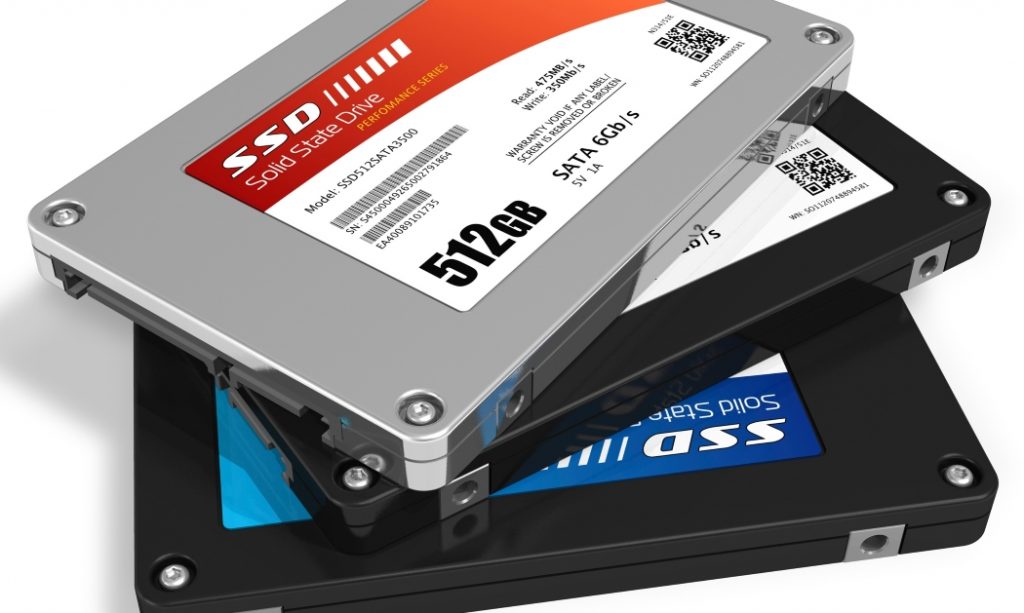
Modern SSDs for laptops
The main disadvantage of capacious (up to 1 TB) hard drives is the low speed. In addition, it is undesirable to shake them strongly in order to avoid failure. Solid State Drives (SSDs) are much faster than HDDs. They more calmly perceive vibration and shock of moderate force on the laptop case. Naturally, the cost of an SSD is much higher than an HDD.
Over the past year or two, developers began to equip high-budget laptops and ultrabooks with hybrid drives:
- At least 1 TB HDD for batch storage of archive files.
- Small SSD (up to 500 GB) - for storing the most frequently used files.
Such a construction of memory significantly speeds up the operation of the device and increases the resource. On more modest devices, only hard disks are installed.
RAM
This indicator directly depends on the parameters of the selected processor. A productive chip is necessarily equipped with an "RAM" of the corresponding power. The type of memory for portable home PCs is SO-DIMM (Small outline Dual In-line Memory Module). The current generation of modern high-performance RAM is DDR 4. Tires have a lower voltage indicator (1.2V) compared to older counterparts. Lowering the voltage by 0.3 V allowed to reduce power consumption by 20-30%. The theoretical capacity of the DDR 4 memory module is 128 GB.

Laptop RAM
To properly perform standard tasks, 4 GB is enough. For PCs that are designed to perform more complex tasks than office work, the minimum amount of OP is 8 GB, the backlog is 16 GB. RAM can be expanded at any time, supplementing it with new slats. But there is a risk of slowing down the PC due to excessive cache clogging. In this case, you should clean the registry of obsolete files.
The best laptops of the year
The five best notebooks of 2018 included the following models:
| Model | Screen, “ | CPU | Drive, GB | Oper. memory, GB | Video card | price, rub. |
| HP 15-db0375ur | 15,6 (1920x1080) | AMD Ryzen 5 2500U | 1 GB HDD | 8 | AMD Radeon Vega 8 | 37 000 |
| Dell G3 15 3579 | 15,6 (1920x1080) | Intel Core i5-8300H | 1 TB HDD + 128 GB SSD | 8 | NVIDIA GeForce GTX 1050 | 56 000 |
| ASUS ZenBook 13 UX331UN | 13,3 (1920x1080) | Intel Core i5-8250U | 500 GB SSD | 8 | NVIDIA GeForce MX150 | 74 000 |
| Acer Predator Helios 300 | 15,6 (1920x1080) | Intel Core i5-8300H (4) | 1 TB HDD + 128 GB SSD | 16 | NVIDIA GeForce 1060 | 92 000 |
| MSI GS73 8RF Stealth | 17,3 (3840×2160) | Intel Core i7-8750H (6) | 1 TB HDD + 512 GB SSD | 32 | NVIDIA GeForce GTX 1070 Max-Q | 180 000 |

ASUS ZenBook 13 - one of the best mid-budget laptops of 2018
Devices were selected according to the combination of capabilities to perform the widest range of tasks. It is possible, having sacrificed one of the parameters, the buyer will find cheaper models on the market.
For what it is worth paying
There are several reasons why you should stock up on a certain amount of extra cash when choosing a laptop.
- Communication opportunities.
A sufficient number of connectors on the ends of the gadget will eliminate the need to look for an additional connection. The number of USB connectors must be at least 4 (at least half of the high-speed standard 3.0). One HDMI socket is required. The 45th jack (Ethernet) is fast becoming a thing of the past. The reason is the widespread use of wireless Wi-Fi Internet. The optical drive is also redundant. It was replaced by flash drives.
- Battery capacity.
This indicator will be important for those who plan to use the device quite a lot outside the home. The device’s battery life is affected by all the main parameters of the laptop - type and power of the processor, screen resolution, video card, memory size.
- Software.
Do not save on a pre-installed licensed operating system. Free DOS is good when there is complete confidence in the quality of the software that will be installed by the owner independently.
Why not overpay
The process of choosing a portable device also has a downside. Sometimes the owner begins to notice that some things, which cost quite a lot of money, were not as necessary as planned in advance.
- Screen resolution.
If the laptop is not bought as a game console, or for working with programs for processing multimedia files and graphics, you should not spend 10-15% of the price on a 4K display.
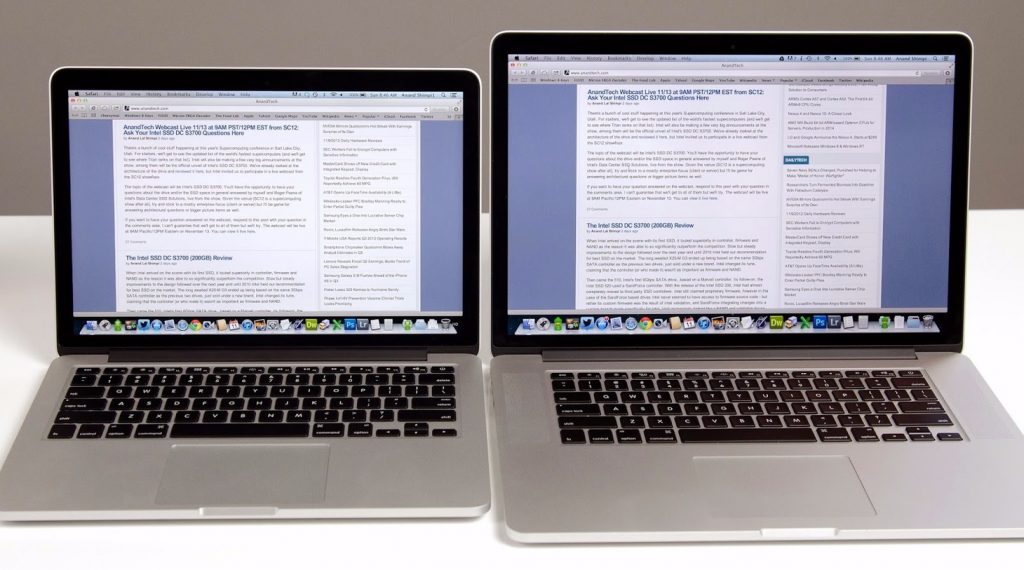
Costs for the “extra” 2 inches of the diagonal can be avoided
- Display size.
The same goes for the diagonal of the screen. The physical difference between 15 and 17 inches is small. And in monetary terms, this will help to save money.
- Video card
If the future owner of the laptop does not plan to use it as a game console, do not additionally purchase a discrete graphics card. Accuracy in this matter will help to save money, for which, if desired, it is easy to buy an excellent Chinese smartphone.

